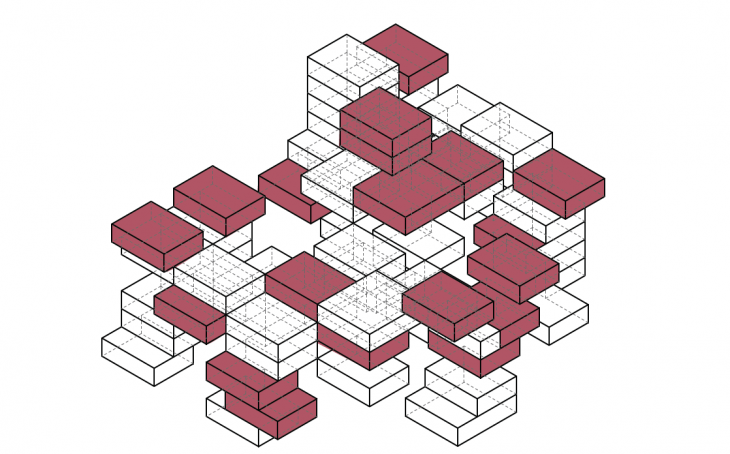Unhiding the Logic of the Informal
This thesis offers a new perspective on the urban morphology of emerging cities based on the hidden property laws within them, separating them from the social aspects by which they are commonly defined as problematic, analyzing, in the first place, its formation and consolidation through the shared economy outside the legal framework, secondly, examining different informal settlements around the world in search of the unwritten rules that define its form and finally, starting from Its topological relationships, I will define laws that can be applied in any legal urban context and socio-economic class.
Building Codes and the Generic city
The image of the contemporary city has been developed based on models of urban codes that regulate from dimensions to programmatic uses, these construction standards not only achieved safer and more order cities but also made them equal and rigid.
The treaty of the Indians, a book written by Leon Pinedo, details specifically how Spanish colonial cities had to be built in Latin America, this document, whose implicit value was the worship of the church, endowed similar characteristics to all urban centers by where the Spaniards passed. Currently, countries are choosing to put aside their local codes to opt for global construction models, something that produces, not only the death of identity of cities but also a world full of generic cities.
However, this phenomenon is not the most worrisome, the accumulation of rules, standards and codes make a city totally rigid and incapable of adapting to a near future where, the population is growing rapidly and populating more and more cities. In this way, the fundamental concern is the fact that in rigid cities, with little flexibility, the living cost is high, which leaves more than a third of the world population with the need to create a set of different rules.
Latin America Colonial Cities
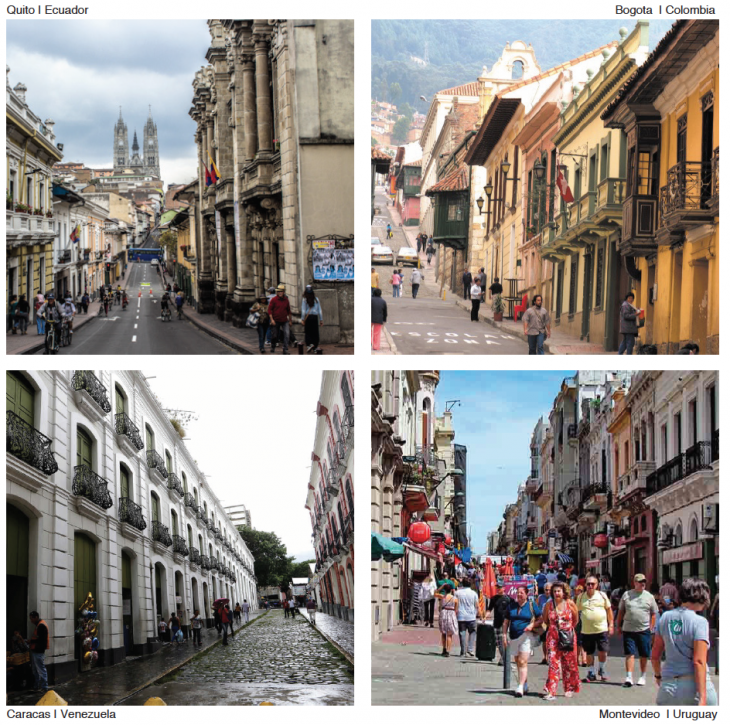
Financial District
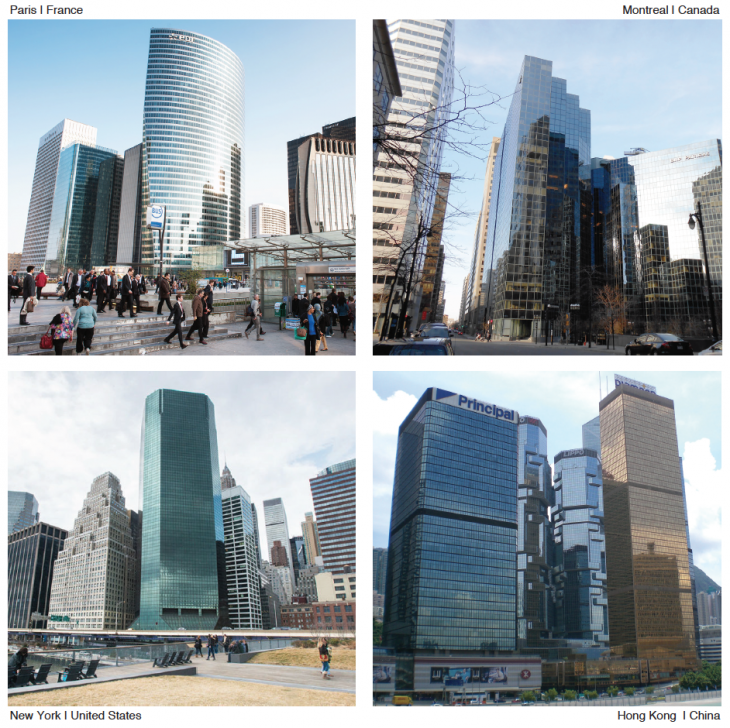
Suburbs
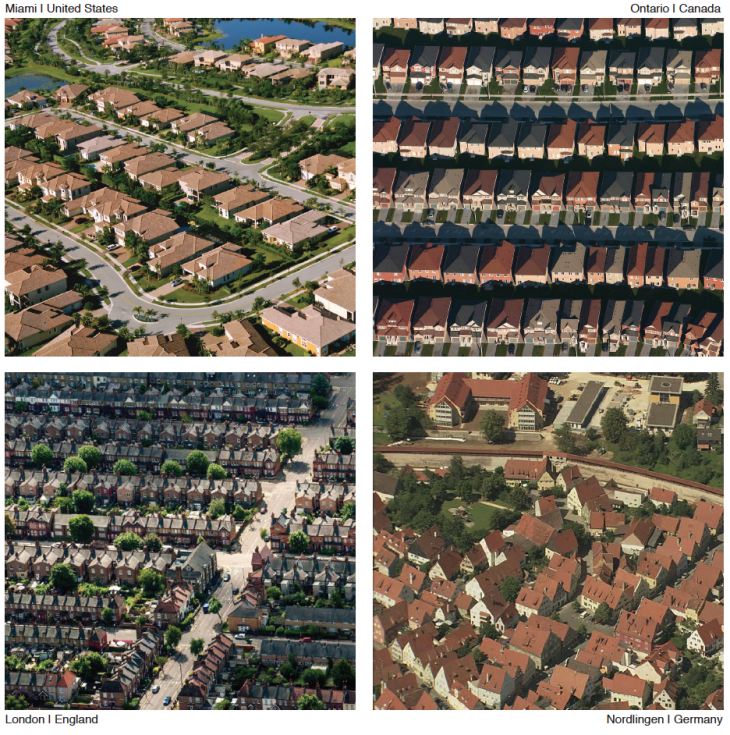
Urban Inequality | Living in the city
Both urban and building construction models stipulate rules and regulations that, together with property laws, make the cost of living in a city extremely expensive for poor people who migrate to seek opportunities. This phenomenon of urban inequality is common in Latin America where more than 113 million people do not have the economic resources to live in them.
In countries such as Mexico, Brazil or Venezuela, the cost of living in urban areas is disproportionate to the purchasing power of poor people. In some cases, the monthly minimum wage, stipulated by governments, does not cover the costs of the basic basket, and in other places the cost of renting houses greatly exceeds the ability of individuals to pay for them.
According to the newspaper La Republica, in Colombia the average salary of poor people is $ 132 and in extreme poverty is $ 64, however the minimum wage to buy necessary products is $ 118. In the case of Argentina the situation It is the same but adding the fact that Buenos Aires is the most expensive city to live in the region.
Costs of living in a city and the poor
Rio de Janeiro | Brazil
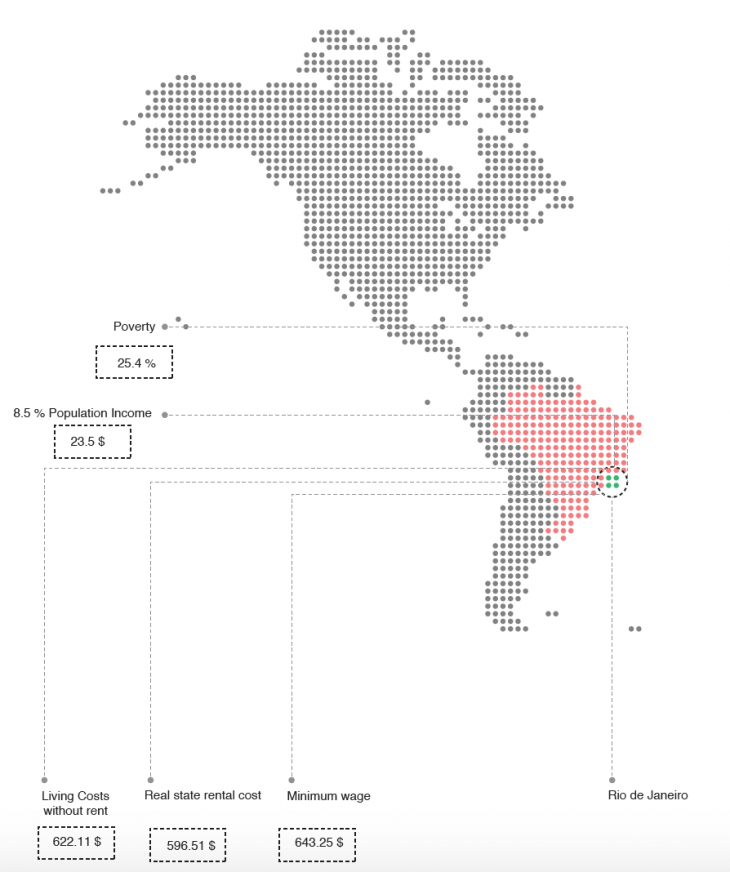
Lima | Peru
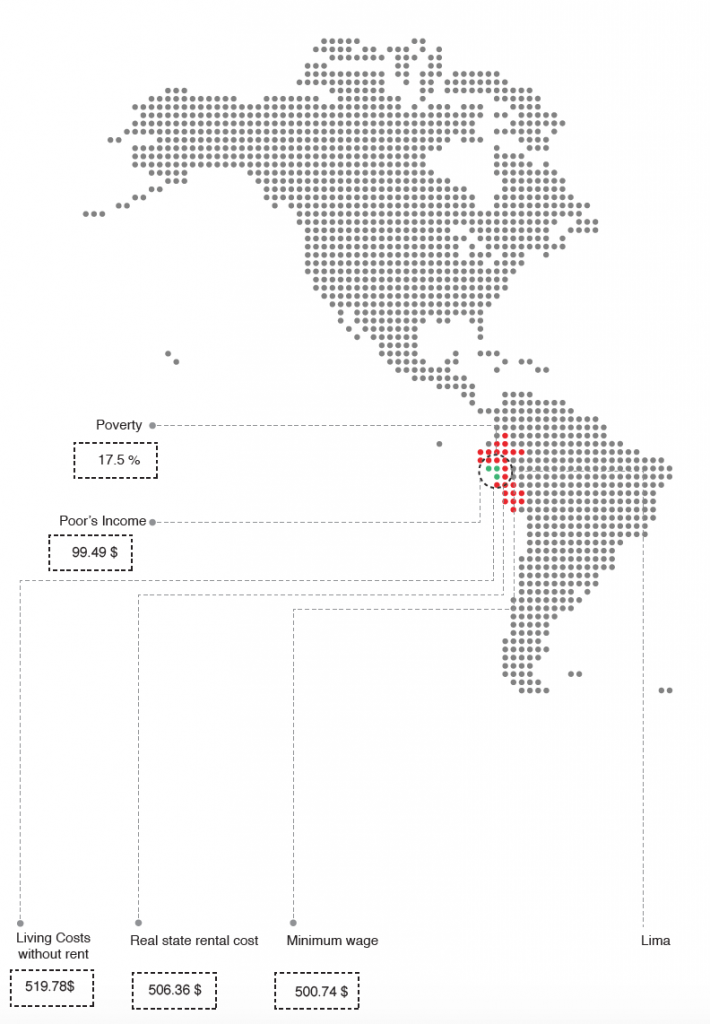
Buenos Aires | Argentina
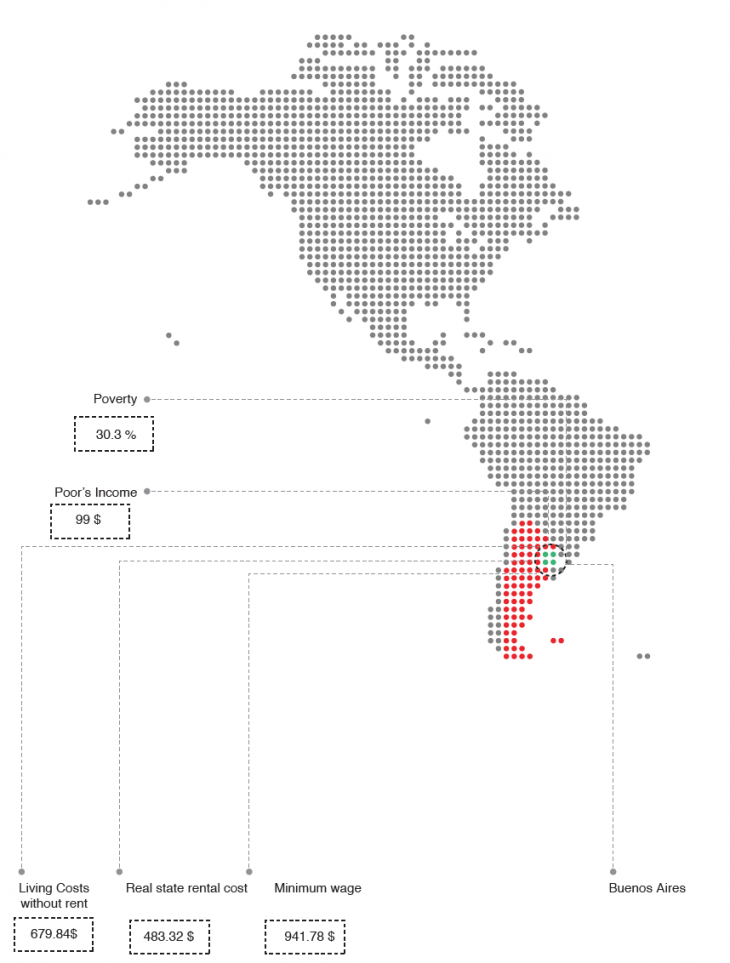
Global Wealth Inequality
It is important to speak, not only of the inequality that exists in the cities in terms of income and expenses, but also of the one that exists globally in relation to wealth. According to the inequality.org portal “More than 70 percent of the world’s adults own under $ 10,000 in wealth. This 70.1 percent of the world holds only 3 percent of global wealth. The world’s wealthiest individuals, those owning over $ 100,000 in assets, constitute only 8.6 percent of the global population but own 85.6 percent of global wealth.”
In the same way, the unknown lies in the definition of wealth and its scale. In relation to people in extreme poverty who daily make less than $ 2 and who make up 15% of the total population, a person of middle class is undoubtedly rich. We must also consider that 56% of the world’s population lives on a low salary and that only 6% have a high salary, however, and giving an example to the aforementioned, in this 6% of the population there are the richest people in the world, which, only the top 10 wealthier combine constitute a GDP higher than many countries, including Belgium, Iran, Norway and Colombia.
Without going to extremes, this great gap that exists between the poor and the rich, which is marked, basically by a minimum banking record, created unjust cities designed for and by the rich within legal frameworks that all they do is discriminate and expel the poor.
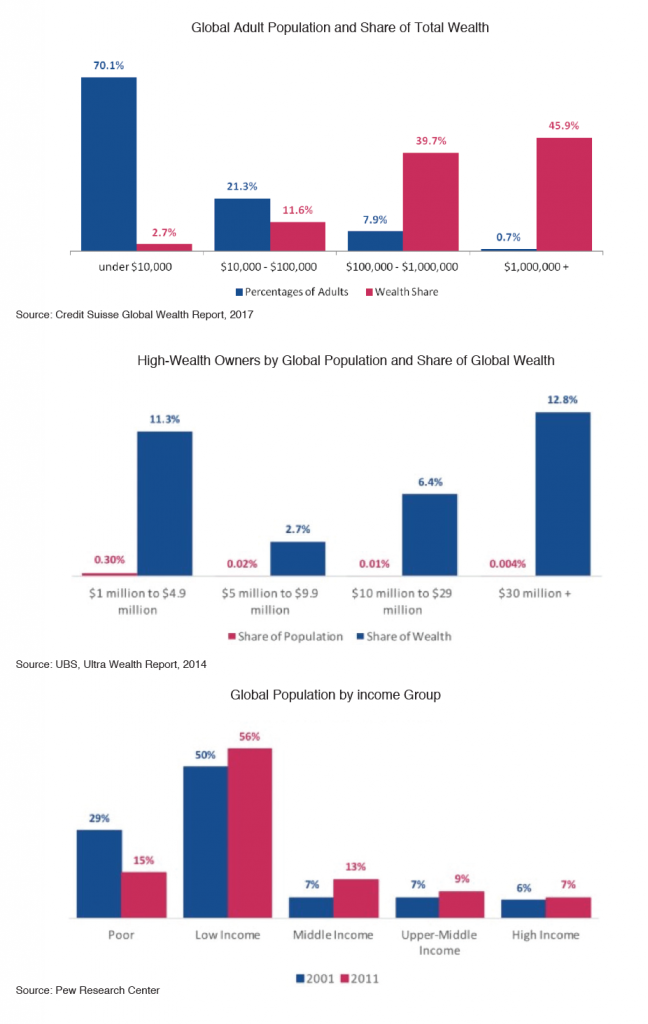
Informal Settelments
According to the United Nations, during 2005–2050 the net number of international migrants to more developed regions is projected to be 98 million. Because deaths are projected to exceed births in the more developed regions by 73 million during 2005–2050, population growth in those regions will largely be due to international migration. The UN forecasts that today’s urban population of 6.2 billion will rise to nearly 9.3 billion by 2050, when three out of five people will live in cities.The increase will be most dramatic in the poorest and least-urbanised continents. One billion people, one-seventh of the world’s population, or one-third of urban population, now live in shanty towns.
Projections show that urbanization combined with the overall growth of the world’s population could add another 2.5 billion people to urban context by 2050, and because of the rigid legal systems of the cities people will continue populating urban areas illegally, converting more of them into megacities.
Currently 1/3 of the global population Lives in informal settlements and it is predicted that these levels will continue to grow. It is estimated that 70% of the world population are going to live in cities, this can not go unnoticed, the lack of urban space will bring problems in the future, that is why studying the settlements that act outside of the legal framework can lead us to give innovative requests for how to build the city of the future.
Worlds Population Growth and Projection
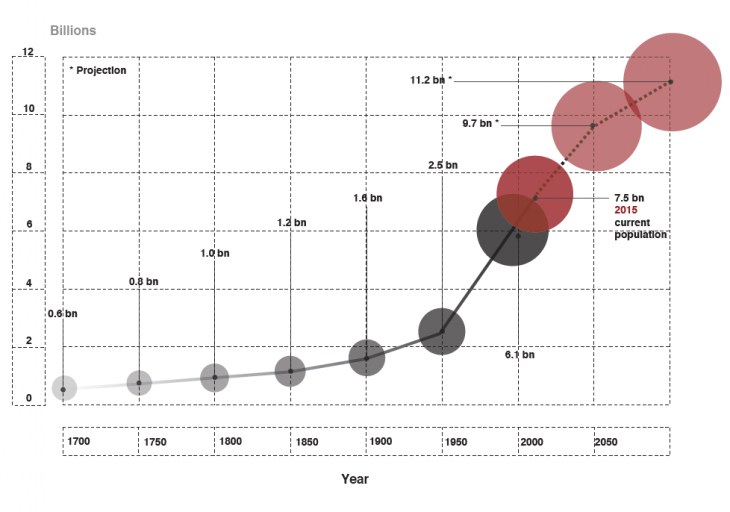
Urbanization trends and estimates in major regions of the world (in % from 1950 to 2050)
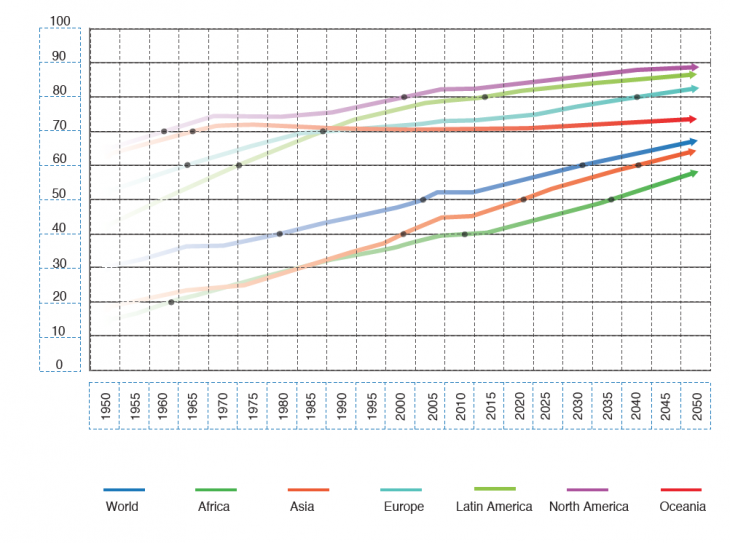
Countries that Contain Most Amount of Informal Settlements
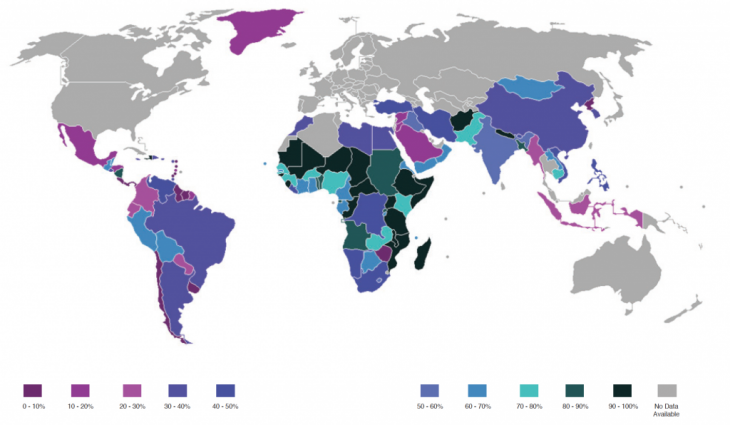
Rocihna | Rio de Janeiro
Rocinha is the largest favela in Brazil, it developed from a shanty town into an urbanized slum, is located in Rio de Janeiro’s South Zone between the districts of São Conrado and Gávea. It has a total area of 143.72 ha. Home to some 150,000 people, Rocinha is probably the most famous slum in Brazil. A city where favela residents make up 22.03% of the population, this means that out of the 6.3 million people living in Rio, 1.4 million live in favelas. The favela sits nestled between three of the wealthiest residential areas of the city.
In Rocinha there are roughly 21 neighborhoods, houses are built on top of each other and the community only occupies an area of approximately 0.86 km.
In the 1800`s , In São Conrado, where most of Rocinha is located, the majority of slaves and former slaves worked in the sugarcane fields and on coffee plantations in the areas around where Rocinha is located today. Also railroad street cars were introduced in Gávea, this form of transportation contributed to poor people, who without nowhere else to live, began making their way up the Estrada da Gávea to build small homes in the thick jungle where Rocinha is located today, living close to where one works was noticeable, and this trend would only increase and cause Rocinha to grow and grow over the decades, today’s it has one of the most robust and successful economies among the favelas.
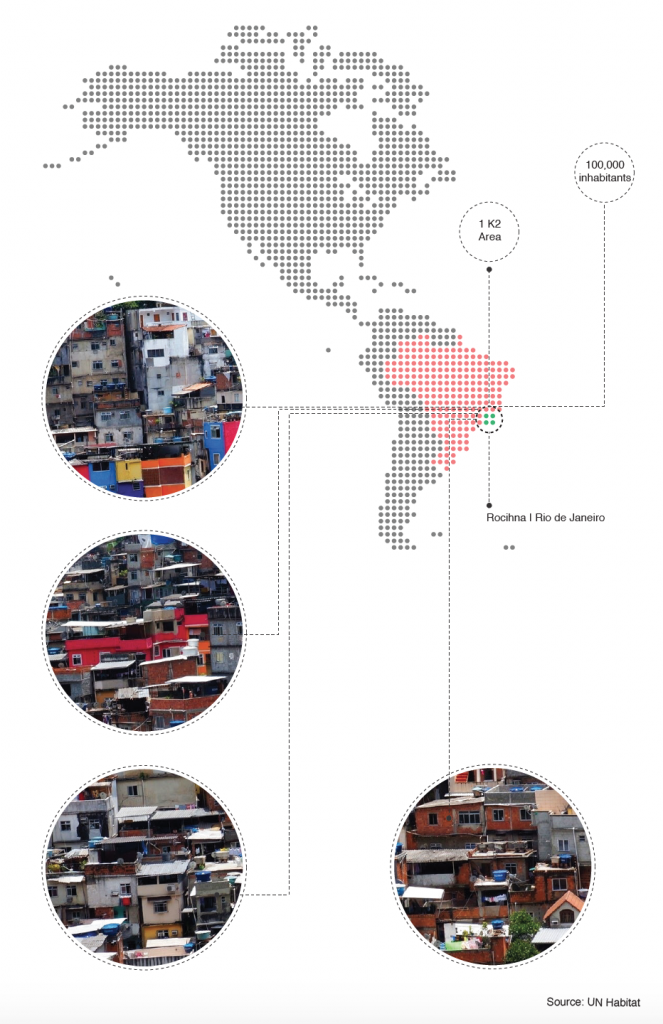
Morphology of the Informal: Rules based on Rocihna’s form
As I mentioned earlier, the Rocihna favela is one of the most populated informal cities in Brazil. Due to its sloping topography the spatial relationships between different levels are complex and dynamic.
Likewise, despite the fact that on the outside it seems that their image is precarious and full of randomness, the reality is that inside there are countless rules that its inhabitants have been creating over time.
The first step was to define a model of aggregation based on the creation of generic forms that represent the construction patterns in the favela, in this way and through empirical studies we took as a starting point a housing unit of 9 by 8 meters divided in 3 longitudinal axes of 3 meters and 2 transverse axes of 4 meters. On the other hand, the interstitial spaces between the buildings that are commonly used to adapt stairs or vertical flow elements were analyzed, and empty spaces that represent main streets and public spaces where added into the equation.
The next step was to define the rules of aggregation considering both vertical and horizontal growth of the main spaces and empty spaces. Finally, 5 generic aggregation models based on the Rocinha structure were chosen.
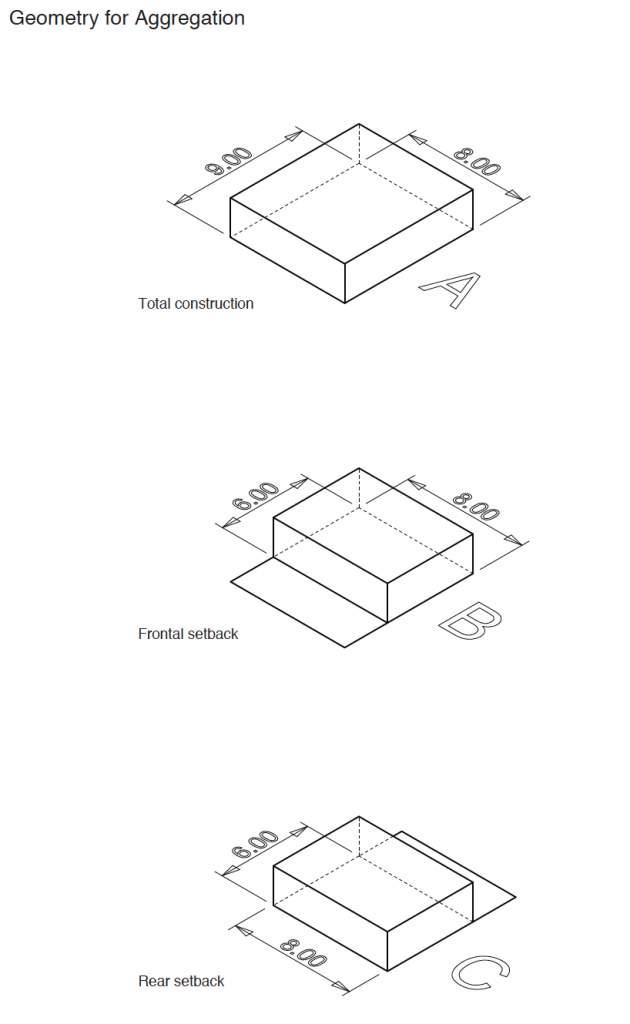
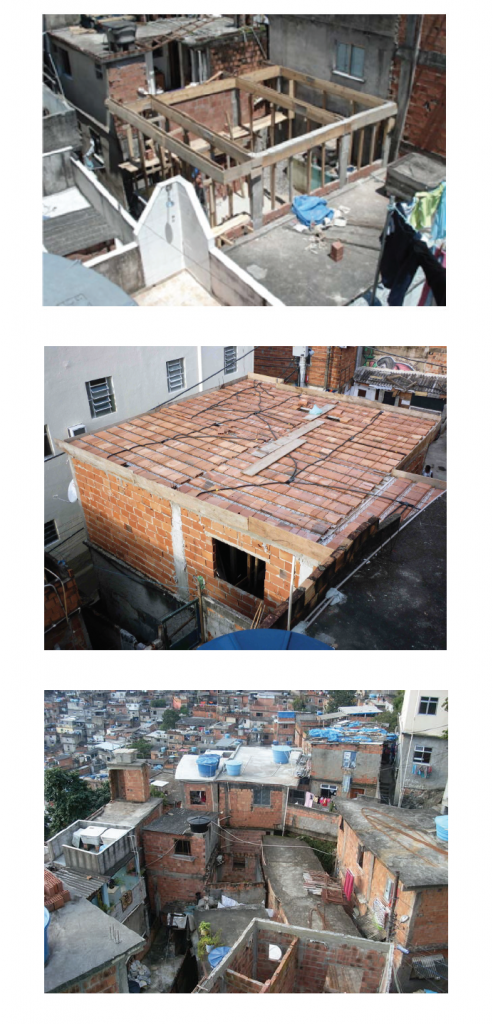
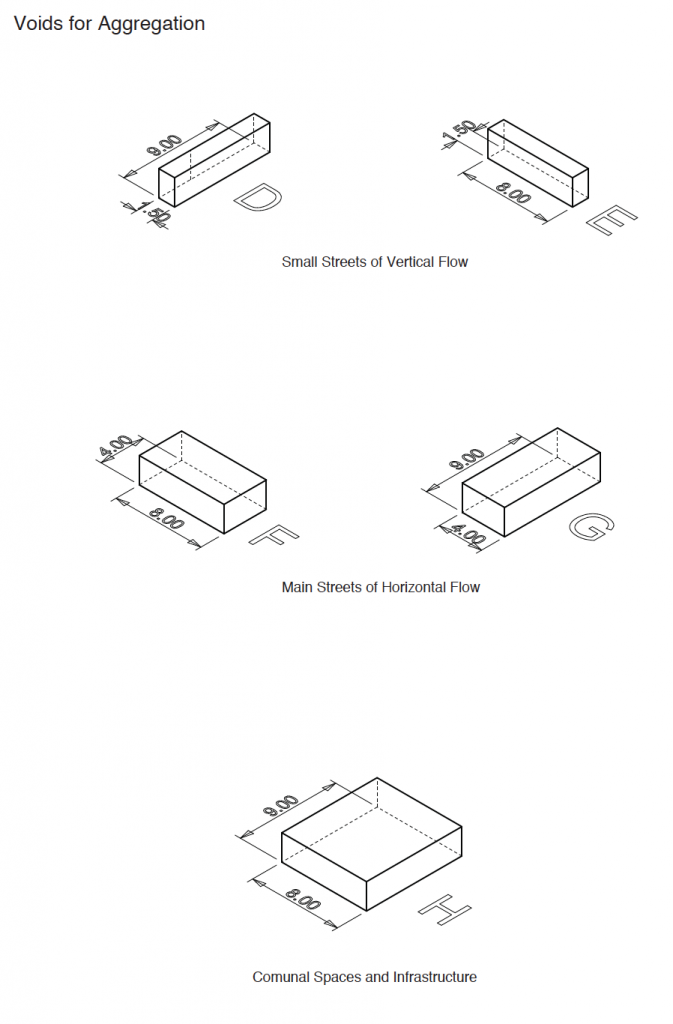
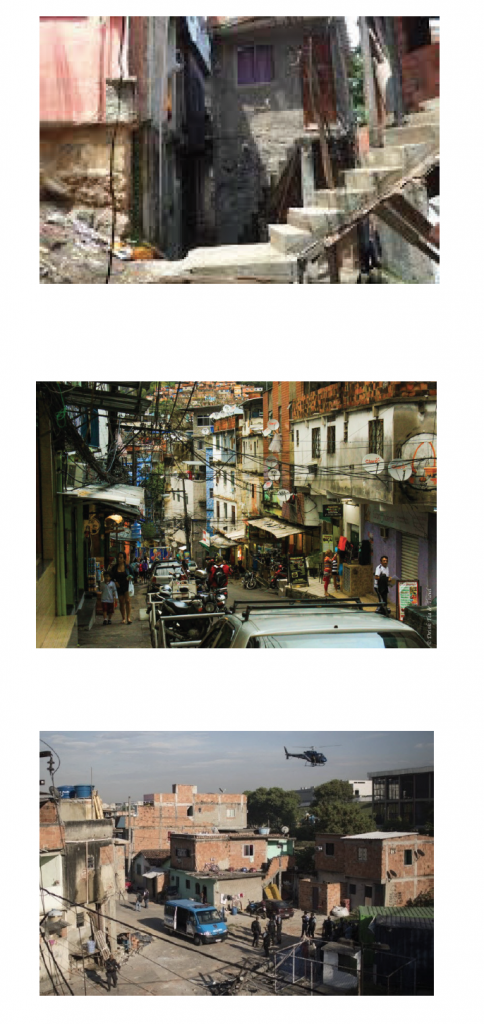
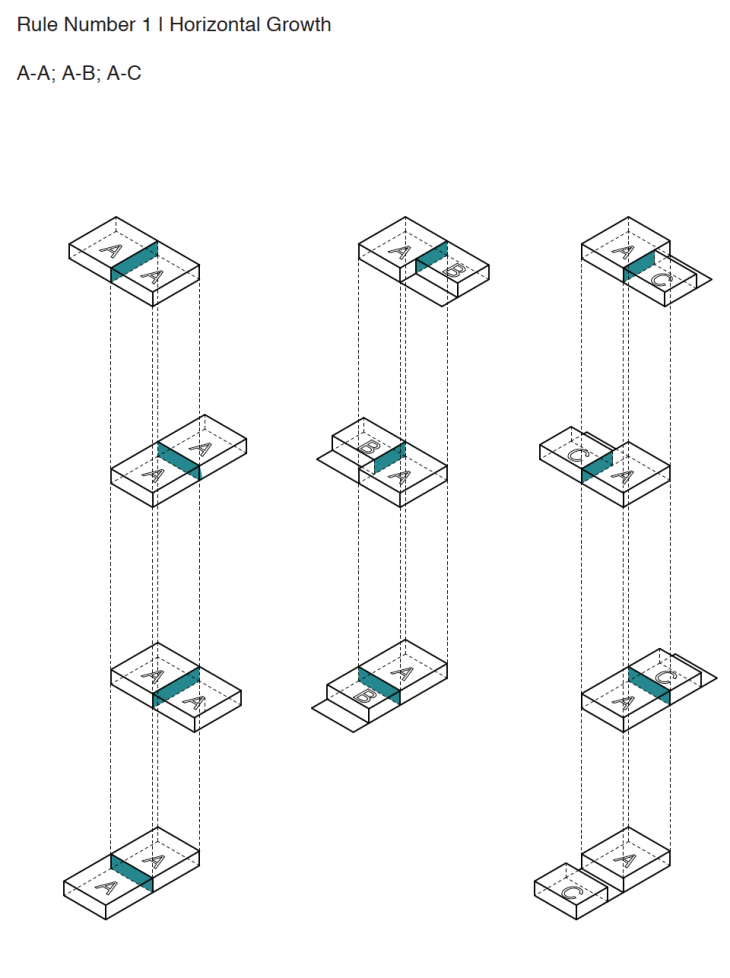
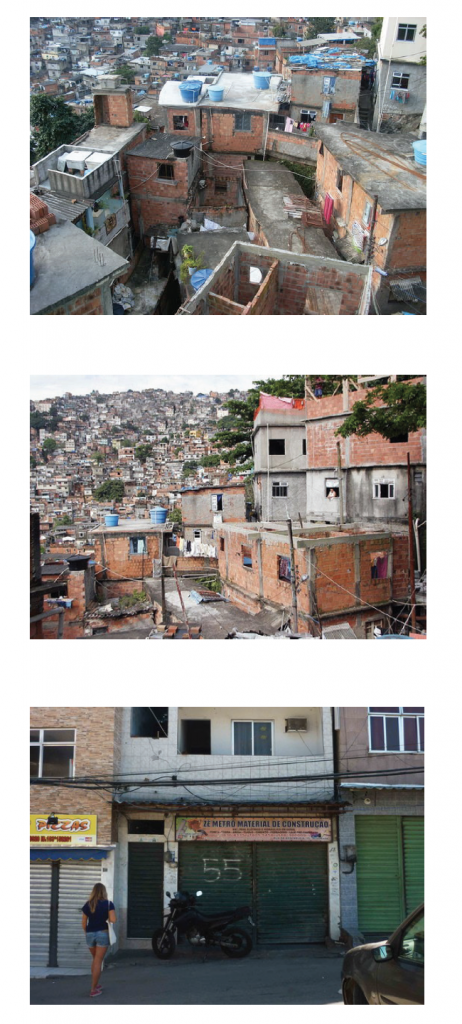
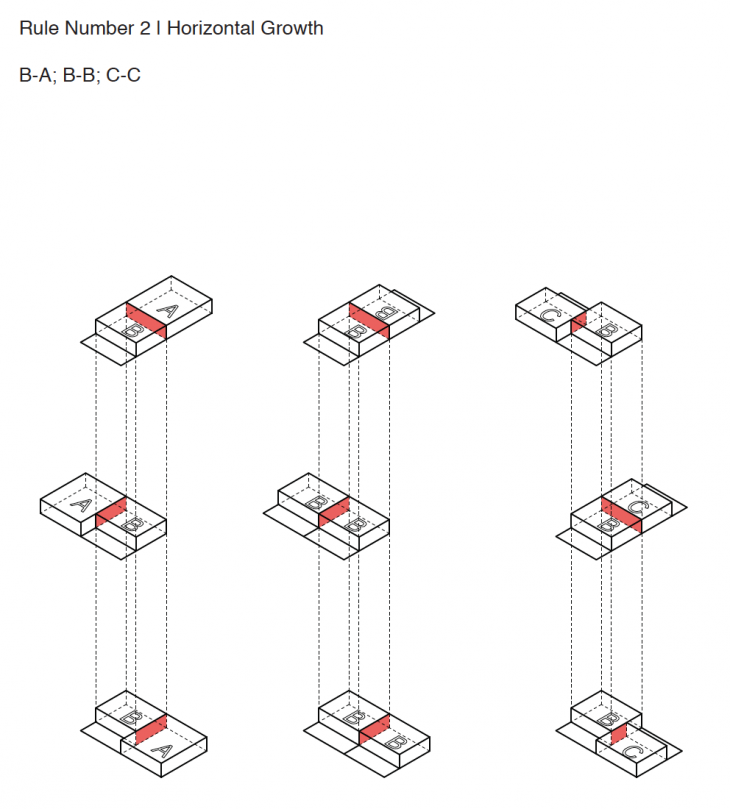
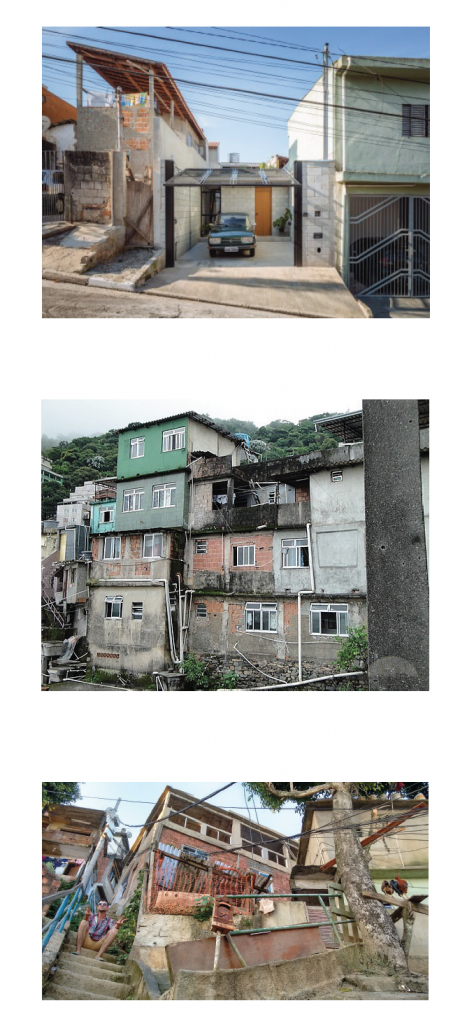
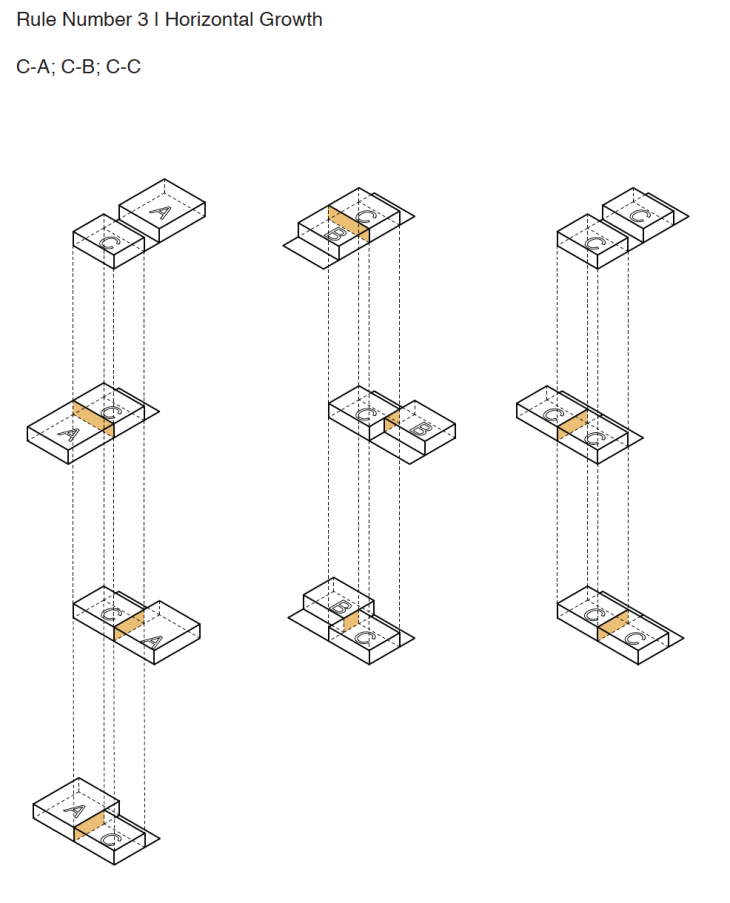
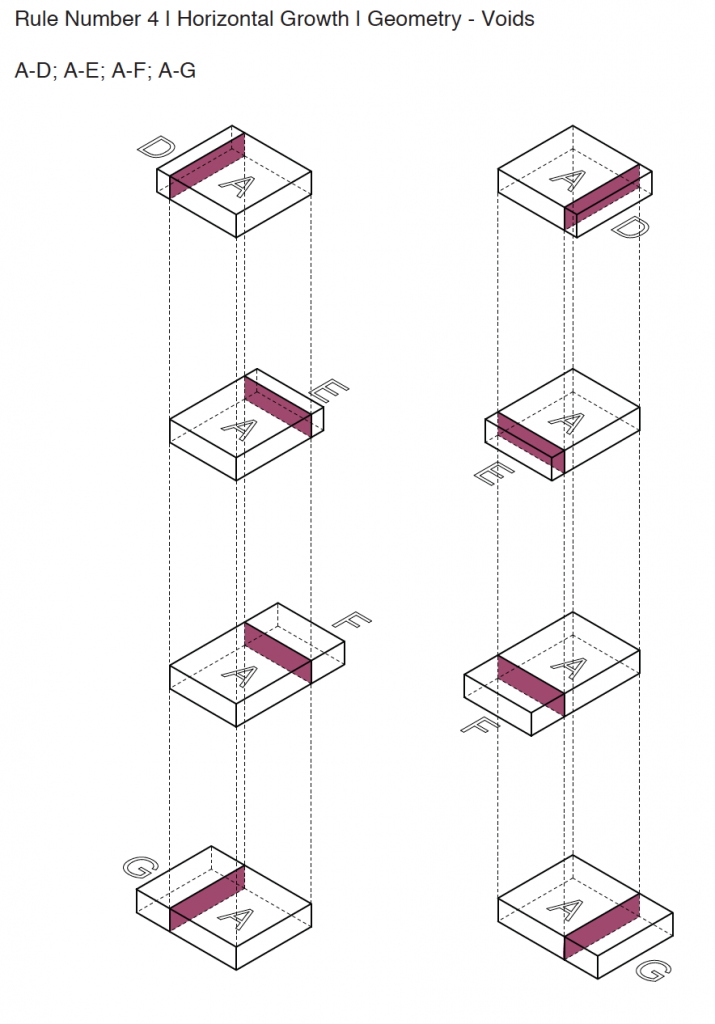
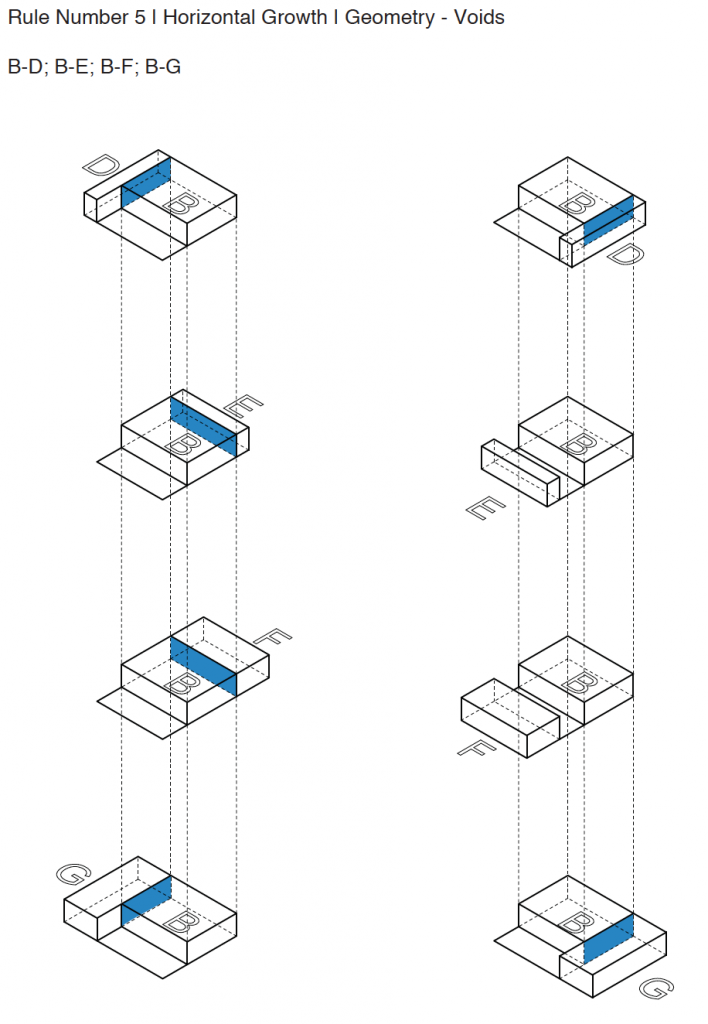
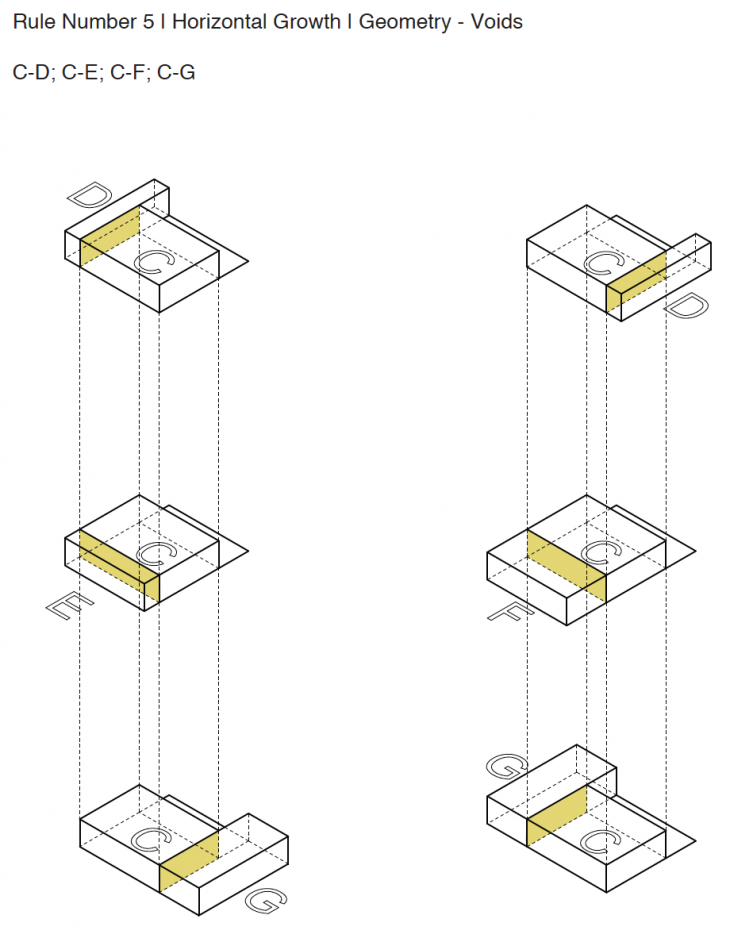
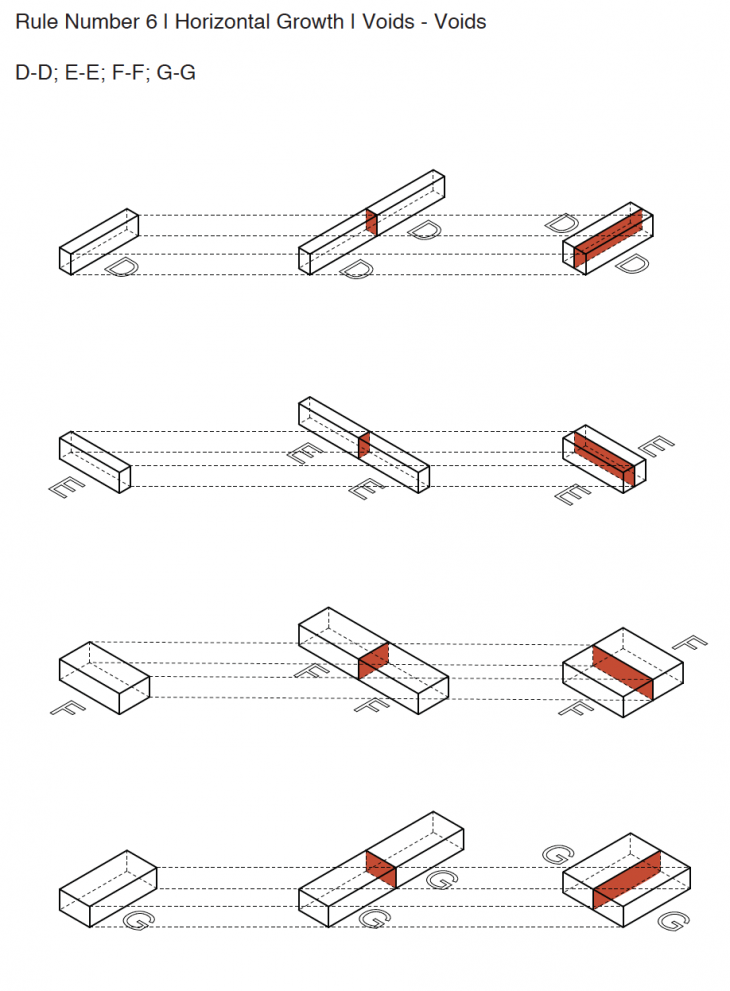
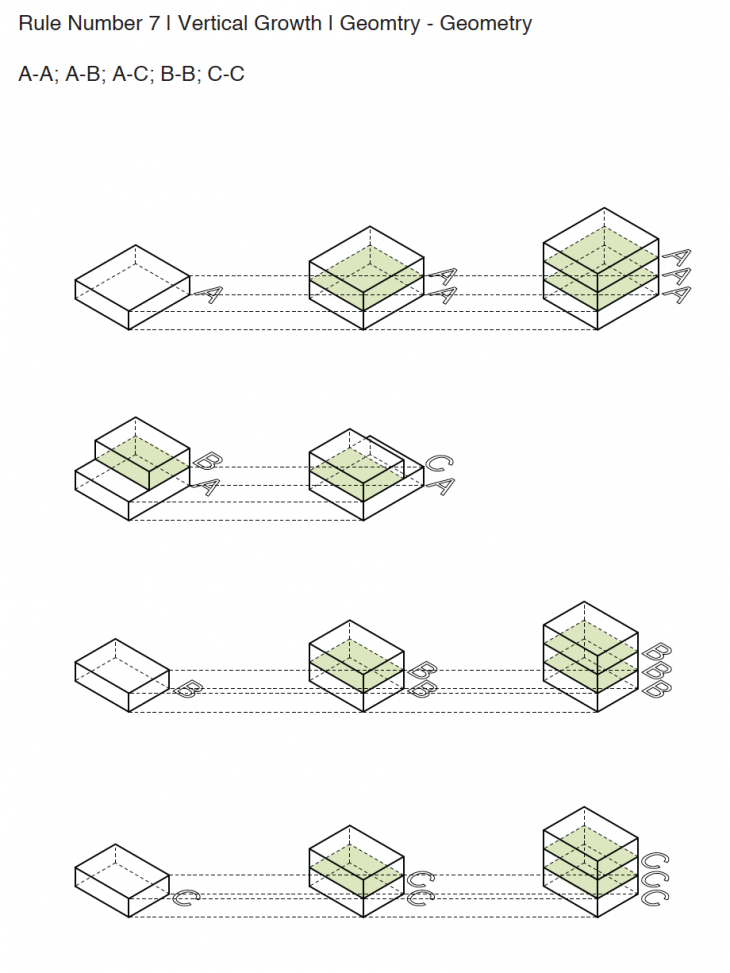
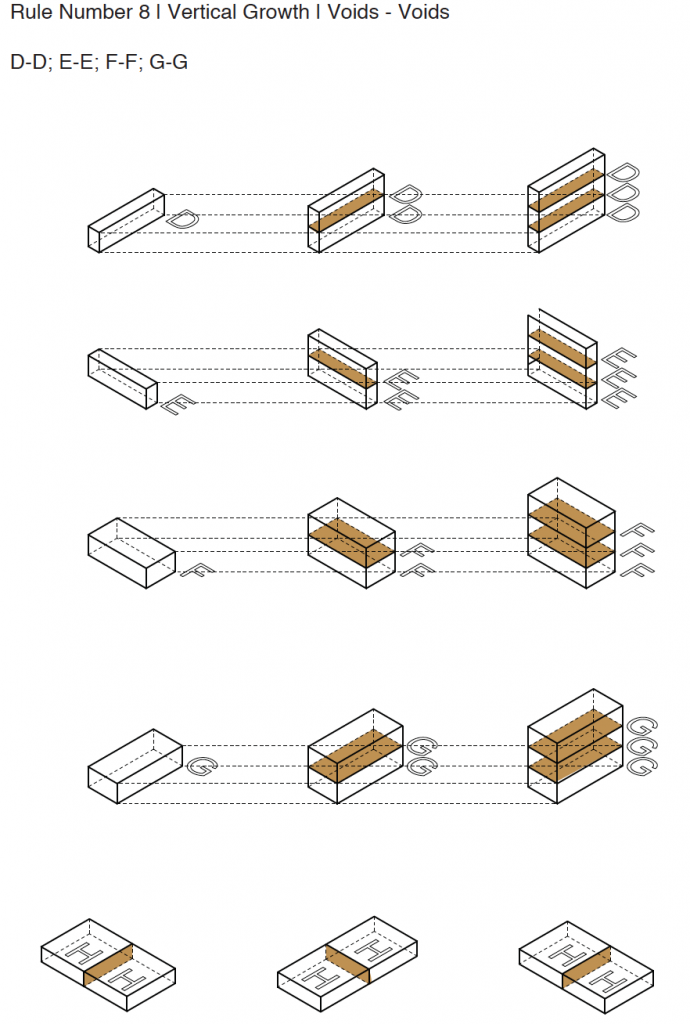
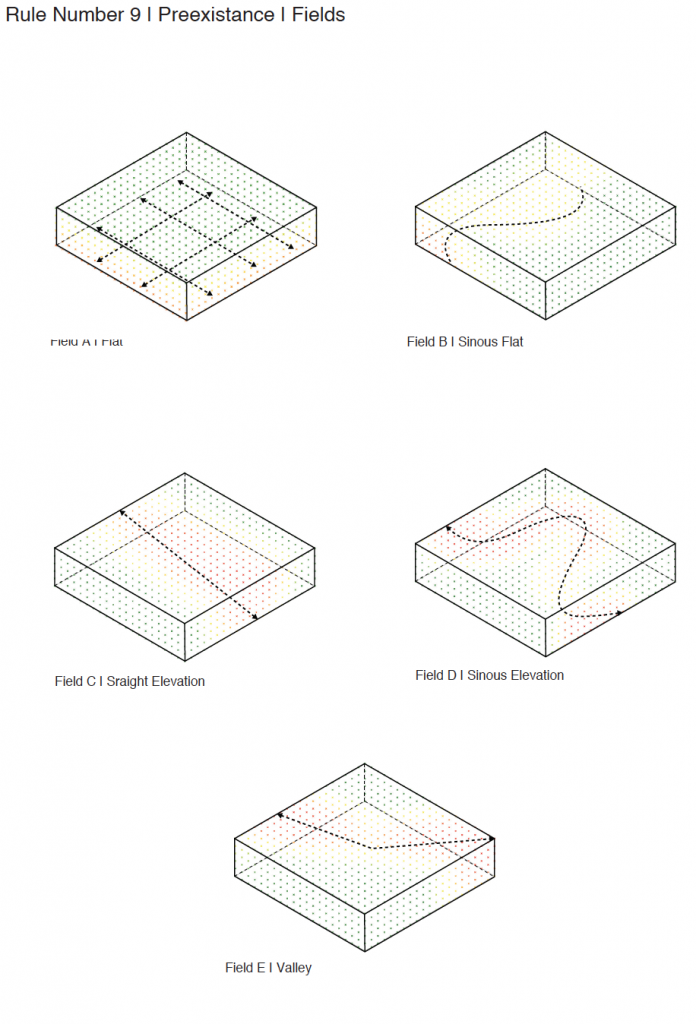
Models of Agreggation A to E | Different Fields
Hidden Laws | Logic
“This is a buttom up urbanization that performs, here the buildings are not important just for their looks but, in fact, they are important for what they can do.”
(Teddy Cruz, 2013)
It is necessary not only to remain in the empirical study of the spatial relationships of the favelas but it is fundamental to go a step further and try to discern the logic that exists within these complex relationships.
This project does not seek to reproduce the idea of a favela, it tries to disconnect from social problems, poverty, unhealthiness, and also from the quality of homes that are created within it. This study is based mainly on the hidden property laws that have triggered the creation of a morphology such as the one of Rocihna.
As mentioned above, the property laws of formal cities are disconnected from the reality in which the world population lives, and it is vital to turn our eyes to the urban areas that are constantly growing, which have developed sustainable strategies to house more and more people.
Within this study, 6 laws or logics that excelled in the aggregation models previously explained are mentioned. The next step of this thesis is to create an architectural typology based on the logic extracted here, a typology that can be applied in any legal urban environment and for any socio – economic class.
Law 1 | Multilevel Developing Land
Within the informal settlements, the spirit of the people always revolves around the hope of building vertically. In some cases, this growth develops over many years and with the desire to house future relatives. In other cases, this aggregation of units serves as a generator of money in terms of tourism or real estate.
The First law defines a constant vertical expansion, where the last floor of each building becomes a developing land. This avoids a spatial rigidity that commonly leads to buildings being devalued and later overthrown.
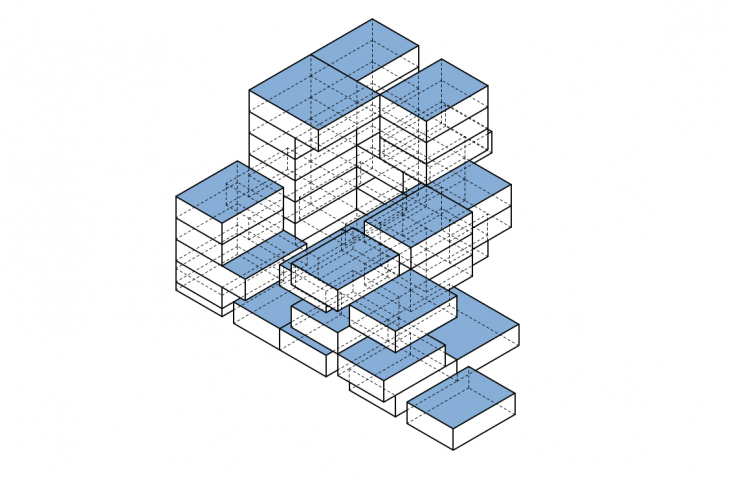
Law 2 | Multilevel Volume Unification
Within the vertical relationships between typologies, there is the ability to unify nearby spaces, which creates different flexible urban layers that interact with their context.
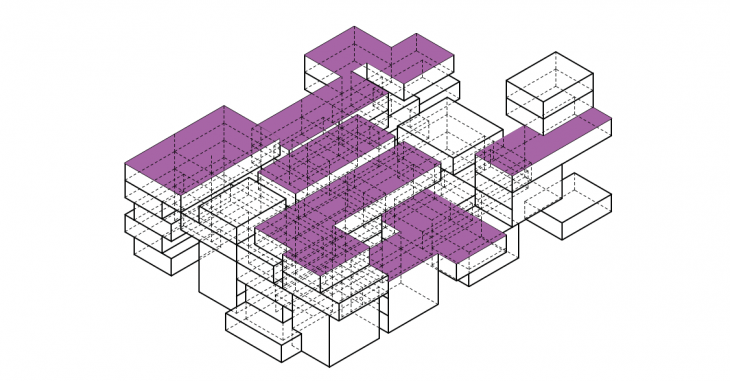
Law 3 | Vertical Connection
Due to the constant vertical expansion it is necessary to create vertical flow elements such as stairs and elevators that connect to public access roads at different levels.
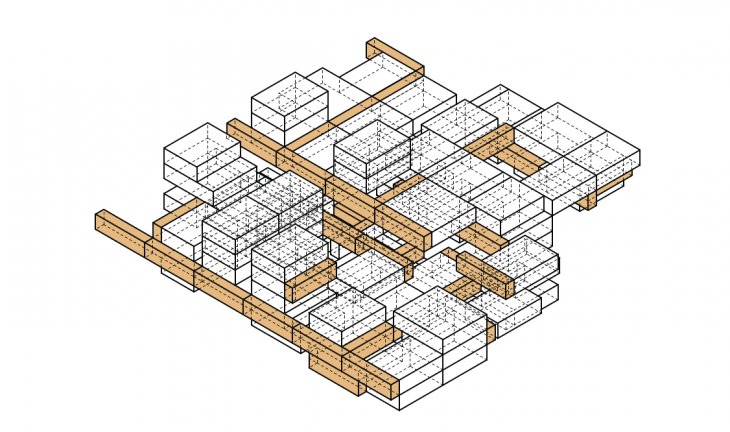
Law 4 | Fixed Spaces
The infrastructure and communal areas are the only inflexible points, they act structuring and generating spatial order. They also create vertical visual connections within the system.
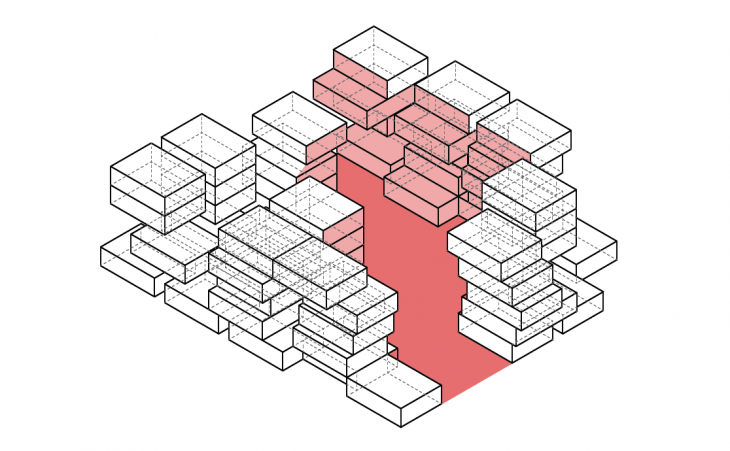
Law 5 | Typology Variation
Within a same urban and architectural context there can found a myriad of varied architectural forms. This is due to the different subdivisions of lots that are created at the beginning of the settlement.
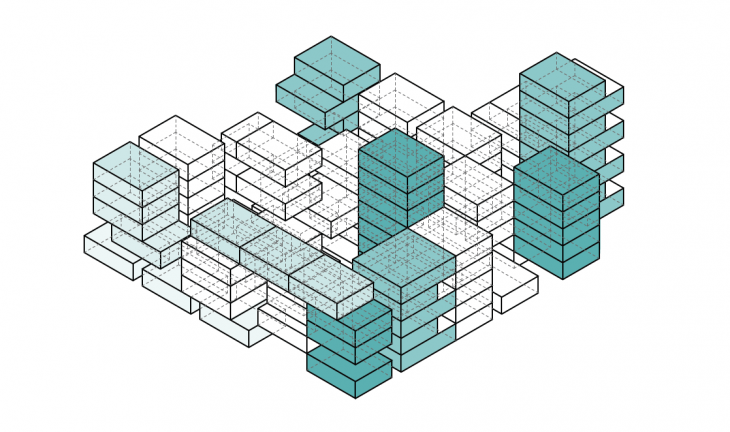
Law 6 | Vertical Discontinuity
Due to the constant vertical expansion and the lack of structural frames, the vertical space is not continuous, thus private spaces typologies can be above public spaces and vice versa.
